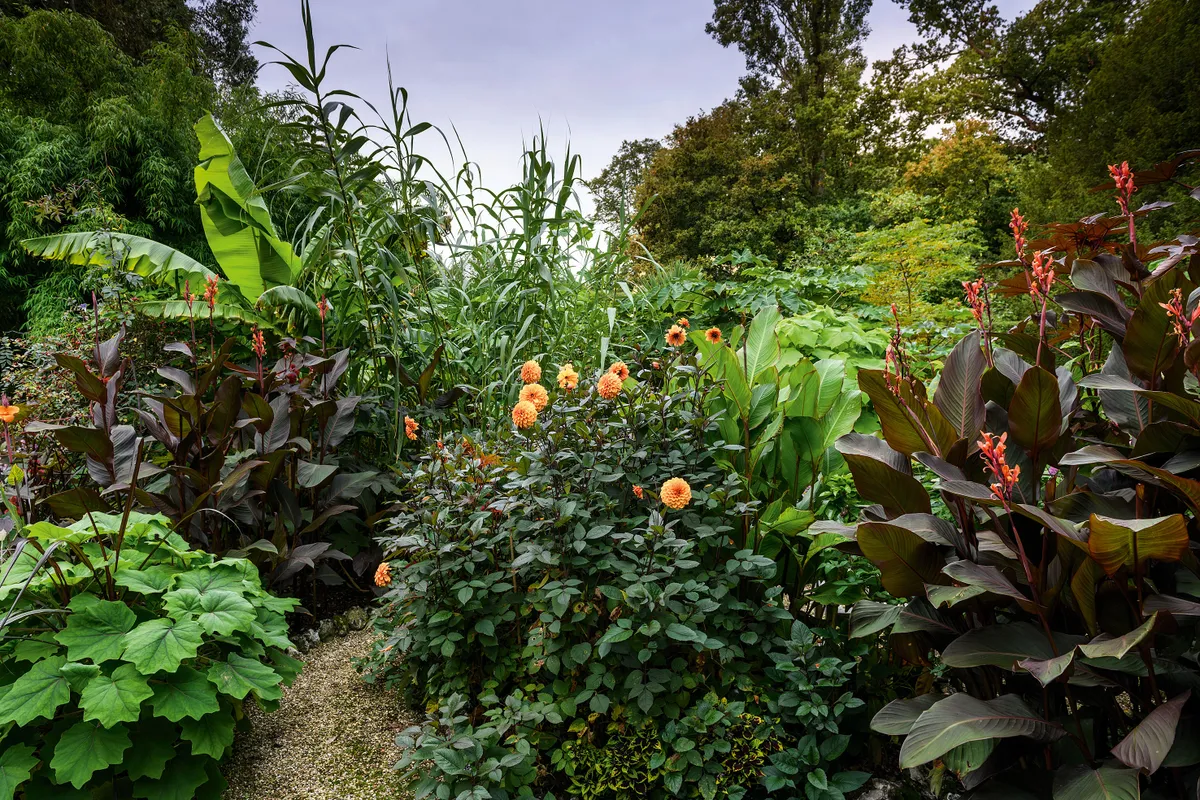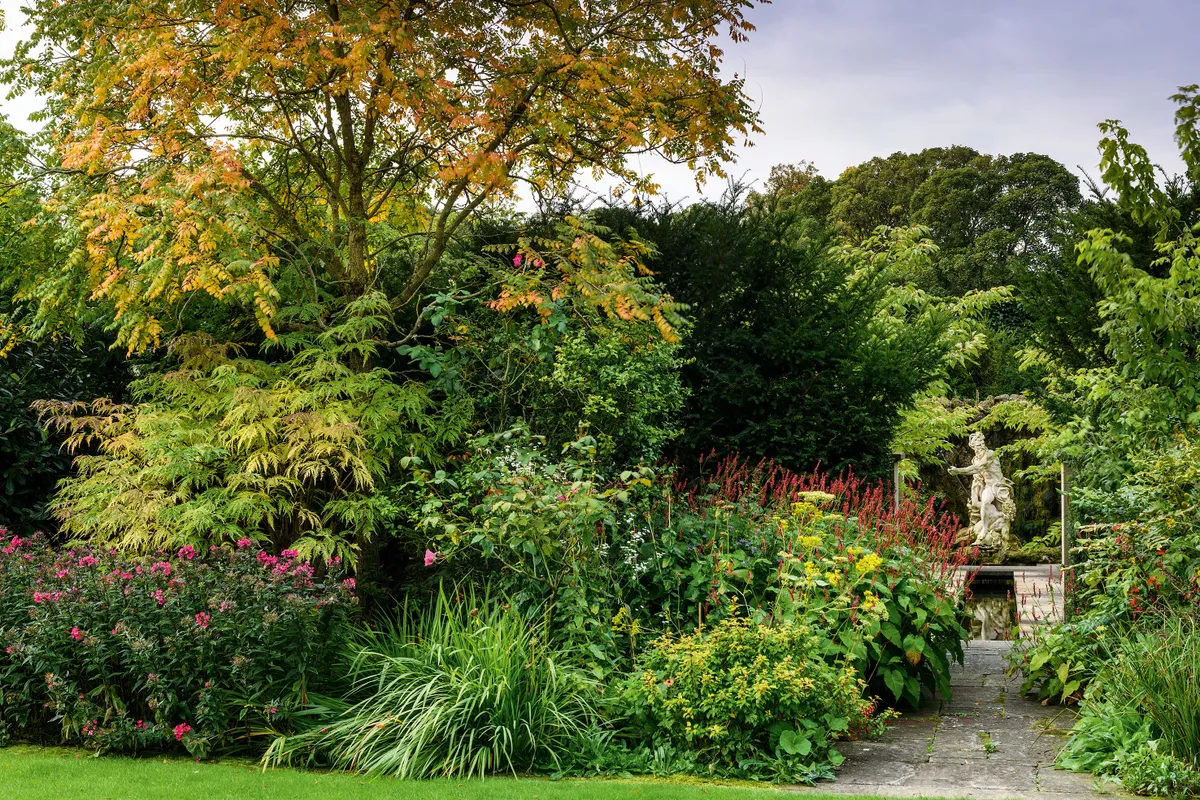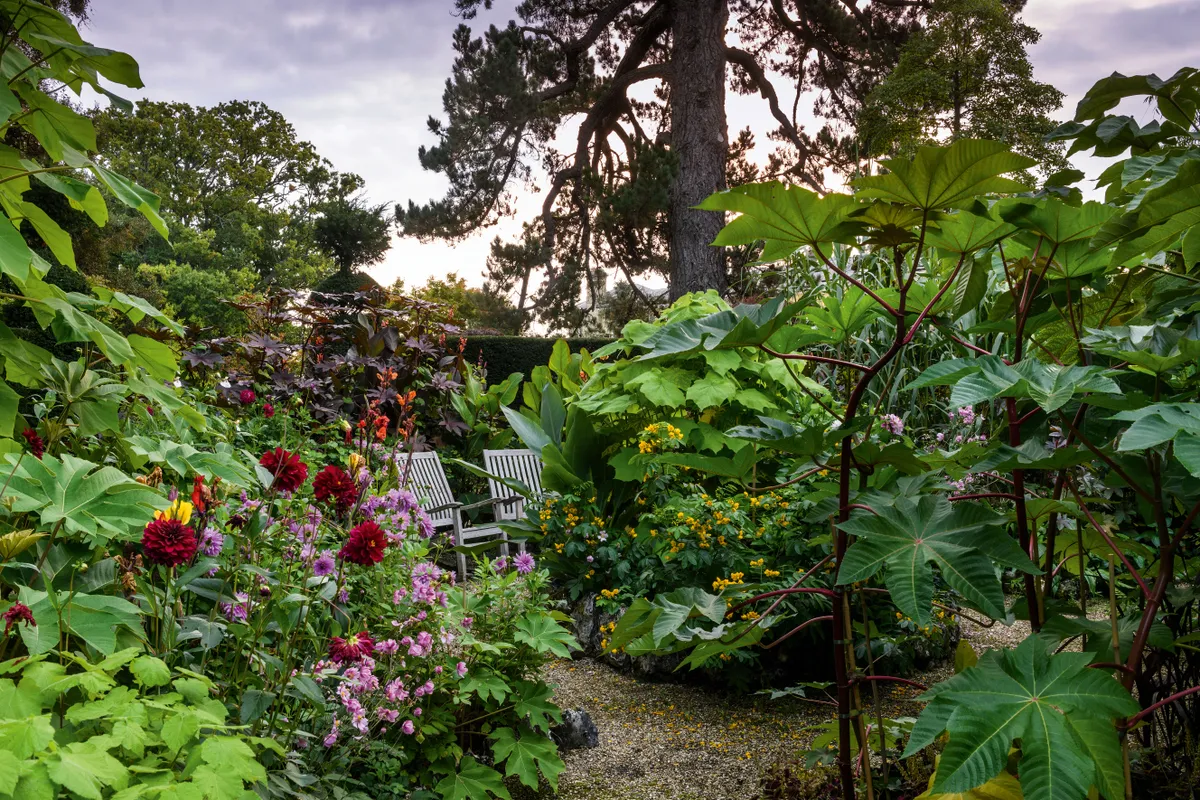The weather in late summer and autumn is quite unpredictable. Storms are frequent, but it is also common to have long windows of rich, mellow sunshine, much kinder on the garden than the searing summer sun that flattens everything into two dimensions. Autumn is also kind to the gardener; it’s too early to start hacking at the border and planting tulips, and too late in the season for major planting. It is a time to enjoy the garden and make plans.
In brief: What A new English flower garden with mixed border planting in a formal design, influenced by the writings of Christopher Lloyd, Vita Sackville-West and William Robinson. Where Hampshire. Size Ten acres. Soil Variable, mostly stony acid loam with clay. Climate Temperate. Sheltered from the west, but exposed(with views) to the east. Hardiness zone USDA 9.
At Malverleys, we work to keep the garden going into the depths of autumn, and the Exotic Garden is looking its best in this season. The drama is set using huge leaves and tropical-looking, late-summer bedding plants such as dahlias, cannas, begonias, ricinus and ipomoeas. The planting is lavish and extravagant, on the brink of becoming an impenetrable jungle with tall plants reaching out from the small beds and linking hands above the narrow paths. Read on for more on Malverleys in the coming season.

Ringed by a yew hedge, the Exotic Garden is planted with lush, tropical-looking plants. Some, such as Tetrapanax papyrifer, are completely hardy while others, such as the trio in the centre – the yellow-flowering senna, the Sparrmannia africana and Musa lasiocarpa – are tender and imported into the garden from the greenhouse.

These flame borders are planted for late colour and here late-flowering perennials and autumn foliage combine. The good foliage of the Kniphofia rooperi carries it through for the summer and flowers are produced in October. Behind, Euonymus alatus ‘Compactus’ is on the turn, and the tall Rudbeckia triloba is in full bloom.

A small fountain is in the centre of the garden and in this area we planted Tetrapanax papyrifer, the rice paper plant, and it is has slowly travelled around the garden making suckering colonies of plants. We let some plants grow tall and others we cut back to keep the foliage
low to the ground.

Foliage in its many shapes and shades is hugely important in the Exotic Garden. Musa basjoo projects massive, sail-like leaves, and the giant grass Arundo donax makes a wonderful contrast to the large leaves. In the foreground, Dahlia ‘David Howard’ has both good, dark foliage and punchy orange flowers.

In the Hot Garden, the Koelreuteria paniculata tree, which flowers in early August, has good autumn colour. Below Sambucus racemosa ‘Plumosa Aurea’ is pollarded to keep the foliage in the mid-zone above the Phlox paniculata ‘Logan Black’. To the side Rosa The McCartney Rose (= ‘Meizeli’) is still producing pink blooms.

At Malverleys we use big plants in the Exotic Garden to add to the feeling of drama that this style of planting inevitably brings. When you walk along the narrow, flint-edged paths, plants tower above you and reach out to almost block your way. As the canopy lifts, we underplant with shade-loving begonias and fuchsias.
Address Malverleys Gardens, East End, Hampshire RG20 0AA. Website malverleys.co.uk Open The garden is open by appointment to groups only. Admission £10. Please book online via the website.
